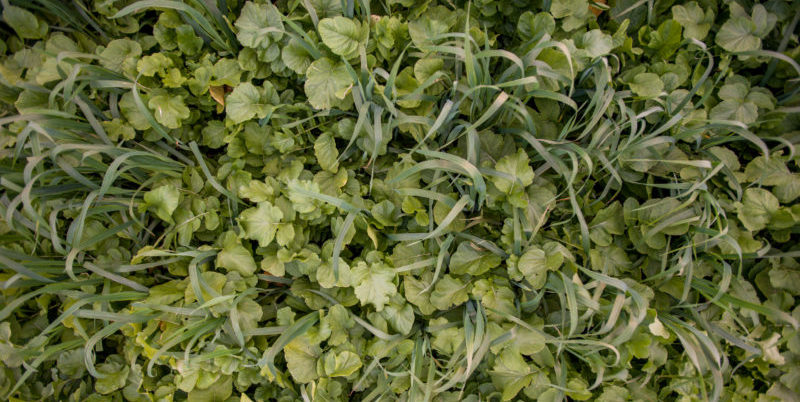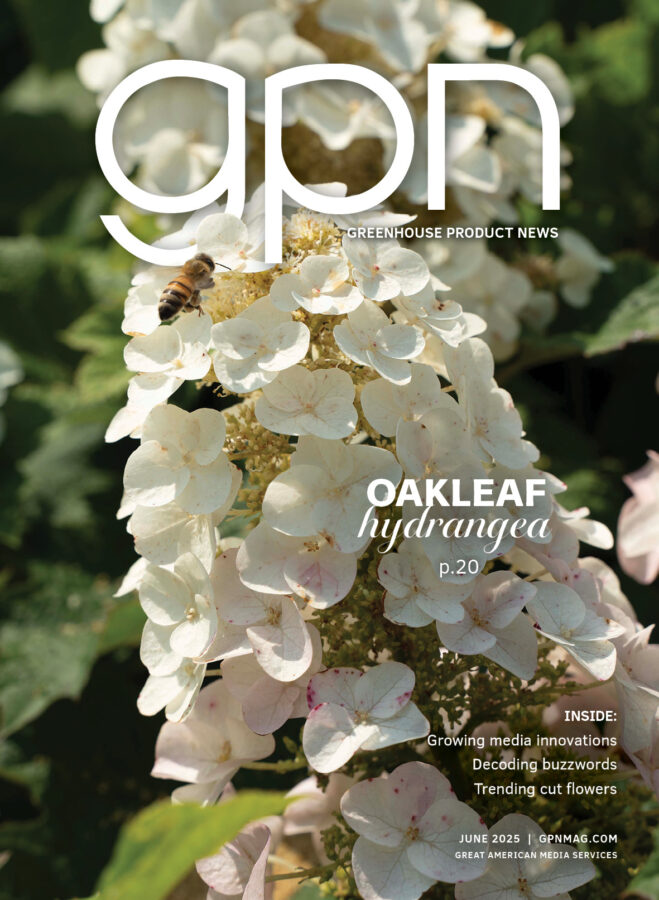
Basics of Fall Cover Cropping for Hemp in Oregon
With careful management, cover crops can provide multiple benefits for hemp production systems. Cover crops build soil organic matter through decomposition of their biomass and by feeding the soil microbial community through root exudates. Increased soil organic matter can improve soil aeration, cultivation, and the infiltration rate of rain and irrigation water. Legume cover crops fix atmospheric nitrogen and supply it to subsequent crops, reducing or replacing fertilizer requirements. Cover crops also suppress weeds and can reduce nematode populations in the soil.
Winter cover crops have significant environmental benefits. They limit soil erosion by holding onto soil and cushioning the erosive impact of rain. Cover crops also take up soil nutrients remaining at the end of the growing season, reducing leaching losses of nitrogen and protecting surface and groundwater quality.
Note: Oregon Department of Agriculture water-quality rules prohibit discharging wastes, including soil and fertilizers, into state waters. Contact the Oregon Department of Agriculture for more information on water-quality rules: 503-986-4700 or https://oda.direct/AgWQ
Selecting cover crop species
Winter cover crops generally fall into one of three categories: grasses, legumes and brassicas.
Grasses such as oats, cereal rye and annual ryegrass produce significant amounts of biomass and have extensive root systems that can dramatically reduce soil erosion and take up available soil nutrients.
Legumes, such as clovers, vetches and peas, fix nitrogen from the atmosphere and supply it to subsequent crops. Brassicas, including turnips, mustards and radishes, can break up compacted soil with their deep roots and reduce soilborne diseases and nematode populations as they decompose.
Grasses, legumes and brassicas are often planted together as mixtures for winter cover crops to confer the various benefits of each group (pictured at top of article).
Growers should choose a cover crop carefully, taking into consideration possible shortcomings, such as:
- Some cover crops may be difficult to establish.
- Cover crops may utilize the nutrients and reduce water availability to the subsequent crop.
- Some may establish as weeds.
- Some cover crops could be difficult to terminate; annual grasses, such as those described below, are easier to terminate than perennial grasses.
- Cover crop residue may complicate seedbed preparation.
- Some cover crops may act as a host for subsequent crops’ disease or insect problems.
Consider the full, multiyear crop rotation when selecting specific cover crops in relation to other crops in the rotation. Hemp growers also should consider the specific requirements of their crop. Is the hemp for fiber, grain or the production of secondary metabolites? Soil preparation; seeding or planting rates; and timing, nutrient requirements and management may differ for various hemp varieties and strains.
Potential cover crops for hemp
Cereal rye, oats, wheat, barley and triticale
Cereal grains often are used as the base grass in cover crop mixtures, with cereal rye being the most commonly used in the Pacific Northwest. Cereal grains provide the best winter cover when planted between Sept. 15 and Oct. 15.
Planting rates should be between 60 and 120 pounds of seed per acre. Depending on time of planting, higher densities ensure quick ground cover from fall rains.
Annual ryegrass
Annual ryegrass is a fast-establishing cover crop suited to a range of conditions. It performs better than cereal grains on wet sites. Annual ryegrass vigorously competes with weeds and scavenges free nitrogen from the soil.
Annual ryegrass, if allowed to set seed in the spring, can become weedy in subsequent crops. When planted in monoculture, use a seeding rate of 30–40 pounds per acre is recommended. Use lower rates of annual ryegrass when planted in mixtures with legumes or other species.
Hairy vetch
Hairy vetch is a winter-hardy annual legume that produces significant biomass and weed suppression through its viny growth habit. Seeding rates for hairy vetch range from 15–40 pounds per acre; use lower rates when vetch is grown in a mixture with a cereal grain. A crop of hairy vetch can fix 90–200 pounds of nitrogen per acre, and about half of that nitrogen will be available for the subsequent crop after incorporation in spring. Hairy vetch can become weedy and should be terminated before it sets seed.

Field peas
Field peas or Austrian winter peas (Figure 2) are less tolerant of saturated soils than vetches or clovers. Field peas are seeded at 50–100 pounds per acre; use lower rates when planting in a mixture with other species. Field peas can fix 90–150 pounds of nitrogen per acre and decompose quickly when incorporated into the soil.
Clovers
Several annual clover species are used in winter cover crop mixtures. Crimson clover is most commonly planted. It grows well in many soils but does not tolerate saturated conditions. Crimson clover should be seeded at 15–30 pounds per acre; use lower seeding rates when planting in a mixture with grasses. Crimson clover fixes 70–130 pounds of nitrogen per acre, and about half of that becomes available to the subsequent crop after incorporation in spring. Other clover species used in mixtures in winter cover cropping in Oregon include berseem, balansa and Persian clovers.
Note: Legume roots need to be colonized by rhizobia bacteria in order to fix atmospheric nitrogen. This is most successfully accomplished by planting seed that has been inoculated with the appropriate strain of rhizobia.
Brassicas
Brassica crops are often included in cover crop mixtures. Daikon radishes alleviate compacted soil and improve aeration. Brassicas, especially mustards, are sometimes planted as a “biofumigant” crop.
The compound that makes brassicas taste spicy, glucosinolate, breaks down into a biocidal compound called isothiocyanate, which reduces nematode and soilborne diseases in crop fields. Brassicas can be planted in mixtures with annual grasses and legumes. Seeding rates for brassicas are 5–15 pounds per acre. Use higher seeding rates for broadcast seeding and planting brassica monocultures.
Note: The Oregon Department of Agriculture has developed rules related to growing brassicas to prevent the spread of black leg, a fungal pathogen of brassicas. All brassica seed planted in Oregon must be certified as free from black leg, and brassica crops should be monitored for the disease. More information can be found in Protect Oregon’s Brassica Crops: ODA’s Black Leg Rules Aim to Control a Disease Outbreak.
Planting method and planting date
Cover crops can be seeded with a grain drill or broadcast onto the soil surface. Use higher seeding rates when broadcast seeding or if the seedbed is rough. Small seeded cover crop species, including annual ryegrass, clovers and brassicas, should be planted from ¼- to ½-inch deep. Cover crops with larger seed, including cereal grains and field peas, should be planted 1–2 inches deep. Successful establishment requires good seed-to-soil contact; use a grain drill to place the seed at the proper depth or broadcast seed over the soil surface and then roll the field with a cultipacker or other roller to ensure the seed comes firmly into contact with the soil.
Cover crops will be most successful when planted between Sept. 15 and Oct. 15. The earlier end of this range is better for regions with an earlier fall frost date. Irrigate if weather conditions are dry after planting and irrigation infrastructure and water supply allow. Hemp harvest requirements, weather conditions, and access to equipment can delay planting. If cover crop planting is delayed, increasing seeding rates can ensure good groundcover prior to winter.
Terminating the cover crop in spring
Most growers terminate cover crops in spring prior to planting their hemp crop. Some cover crops can be terminated by mowing, but many require tillage to ensure the crop has been adequately killed. Some cover crop species, such as hairy vetch, become weedy if allowed to set seed, so terminate the cover crop prior to seed set.
Cover crops allowed to grow alongside the hemp crop will likely cause competition for water and nutrients and may cause competition for light. If this competition is not managed or alleviated with additional irrigation and fertilizer, the productivity and yield of hemp may suffer.
Key points
- Cover crops provide a range of benefits to the production of hemp and the surrounding environment.
- Plant two to five cover crop species (generally at least one grass and one legume) before Oct. 15 or as soon as possible following hemp harvest.
- Plant to an appropriate depth and ensure good seed-to-soil contact.
- Inoculate legumes with the appropriate species of rhizobia.
- When using brassicas, plant seed that is certified as free from black leg.
- Terminate the cover crop in spring before it sets seed to avoid weediness.
— Gordon Jones, Valtcho D. Jeliazkov, Richard J. Roseberg, Sam D. Angima, Oregon State University










